This is a fun article I read the other day and wanted to share. Our only limit is our imagination. Link below to the original.
Jon
Traps
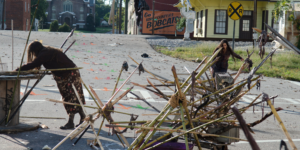
A trap is a device or tactic used to harm, capture, inconvenience or detect a target. For the purposes of this article, we are mainly concerned with ‘man-traps’, or traps intended for human-sized enemies (specifically, zombies).
Traps can be divided into passive (e.g. a hole with spikes at the bottom) or mechanical (e.g.a device that needs to be triggered, and has moving parts, such as a landmine).
As a trap is stationary, or at least has an effect normally confined to a small area, the movement of the target has to be a considered element. ‘Channeling’ the enemy towards the trap must be performed in some way, normally by restricting the movement with obstacles (such as walls in a corridor, or barricades with small gaps between them) and by creating predictable movement with bait (for zombies, a loud noise will normally suffice).
An important element to remember: Traps rarely differentiate between targets. When targeted at a zombie, it might be a very good idea to mark the trap in some clearly visible way, for your own later reference and to prevent other survivors from stumbling into it. As an example, minefields are normally marked as such by the creators with clear signs.
Some simple examples of traps follow:
Hanging snares
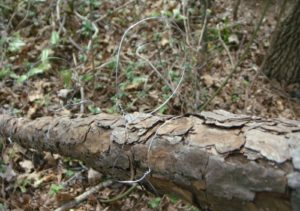
Rope or wire made into a slip loop, a weight and a simple trigger i.e. stick to hold the rock or cinder block steady until the loop catches the head, then the weight falls and zip… Off comes the head. Best with trail funneling and/or multiple sets. Also the possible bonus of the weight crushing a head.
Holes

Simply a deep hole or trench of holes in the ground. It can take some time to create, but all that is needed is some kind of shovel and some energy. Many forms of zombies will simply walk into it, so channeling can be as simple as walls or barricades. The damage caused can be increased by the inclusion of spikes at the bottom (even rocks or uneven rubble can help here). In the event of a zombie swarm, holes can fill up quickly, so try and incorporate a way to empty the holes, or be prepared to dig new ones quickly. The zombies can still be a hazard, so make sure that you eliminate those in the holes and dispose of them appropriately. Animals may also fall into the trap.
Spiked Defenses
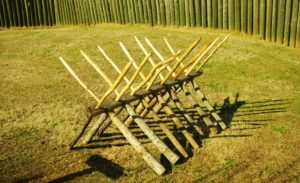
Sharp spikes, embedded arrows, etc, protruding from a wall or barricade. The less intelligent zombie variants can simply impale themselves on these. Smarter kinds might need another element to the trap, or a strong bait to make them incautious. Be warned… impaled zombies might simply be trapped rather than destroyed, and might still be dangerous when approached.
Punji Pit
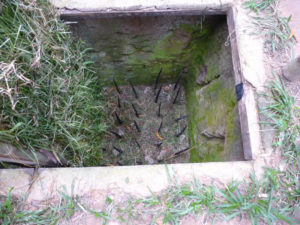
Used by many cultures where bamboo is common it is a mixture of Spiked Defences and Holes. Prefered spike material are sharpened re-bar but bamboo and other sharpened woods could be used. For added damage, you can even throw broken glass along with the spikes. When the hole gets to full, just throw a molotov down there and it should be cleared out, but make sure that you have a way of controlling the fire. People also put human feces on the spikes to make any humans that fall on it get a infection.
Caltrops

An antipersonnel weapon made up of two or more sharp nails or spines arranged in such a manner that one of them always points upward from a stable base (for example, a tetrahedron). They may be thought of as the landmines of antiquity, useful to shape the battlefield and force the enemy into certain paths and approaches, or to provide a passive defense as part of a defensive works.
Good against the alive and the dead. For added effect against the living, adding feces or urine will cause infection on contact.
Explosives

As a last ditch defense, the careful stacking of explosives along channel paths can be used to destroy clumps of zombies. Common explosives could be stores of flammable material (e.g. fuel barrels or flammable chemicals) or perhaps piles of propellant-based ammunition that are old and unreliable, or not usable by any of your weapons. The explosive can then be remotely triggered in some way, perhaps with a fuse or being shot at a suitable time (this will probably require some kind of explosive or phosphorous-based projectile)
Weighted traps
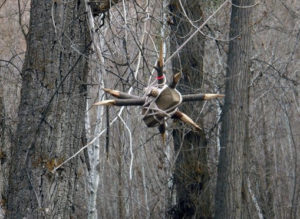
Ideas for these can be sourced from movies. The common factor is some kind of weight, held back by a removable support. When the support is moved, the weight falls or swings down to deliver a crushing blow to the zombie. With a little care and planning, these can be simple, inexpensive and very effective. For extra safety, the support can be manually removed… otherwise a tripwire can be very easily employed. You can also put spikes on it for extra measures.
Rigged Firearm
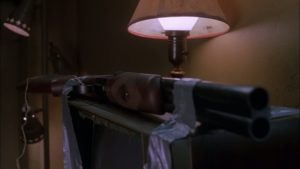
Run a trip wire past a door way, so when something touches it, Boom! This should not be used against humans, because if they disarm it, they’ve got a weapon. Not ideal or recommended anyway.
Ropes and Chains

Useful if used correctly, a rope or a chain can slow a zombie or group of zombies dramaticaly. Simply tie or otherwise fasten both ends of a rope to a doorframe below knee level, and they will be tripped giving you time to escape, or finish off the prone zombie. Likewise, chains can be tied, or even spun and sent flying at a zombies legs to trip them up, and set them up for a killing blow. Ropes and chains are not deadly so use them only to slow G’s down.
Swinging blades

The simple version could be swinging from some kind of counterweight, whereas one could power the blade with a motor or even water power if moving water is nearby. Simply channel and/or bait the zombies towards the moving blade, and ensure the blade is strong and heavy enough to cut completely through the body. This is much easier to accomplish if the blade is mounted horizontally, as it will affect a greater circle.
Free Hanging
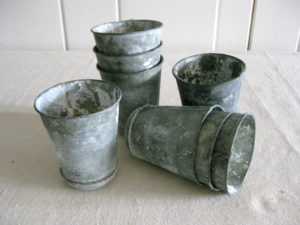
These traps generate noise when something bumps into a free hanging rope, wire or line. Simply attatch cans, keys or bells, or any object that can make a decent racket when shaken or slammed together, on a wire or rope. These can be attached directly to a line (by feeding it through the loop on a key or the pop tab on an empty soda can) or attached separately with a small amount of additional line individually. Attaching them separately takes additional time and resources, but helps keep the hanging objects from clumping together and gives them a wider range of motion which helps the trap generate noise. Remember that particularly heavy objects will take more effort to generate noise, so aim for small, lightweight objects. Additionally, this trap should be placed in a manner that someone will be able to hear it every time it goes off and easily check the area. If possible, it should be kept away from wind and rain to avoid false alarms. Placement inside a building at around hip height is optimal.
Piezoelectric Sensor Alarm
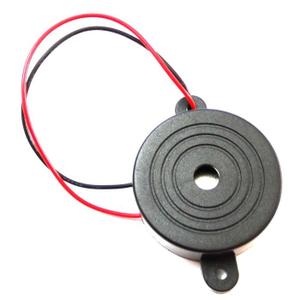
This trap generates noise in response to noise at a specific location. Setting it up requires a small amount of power (such as a 9 volt or car battery) and an amount of knowledge of electricity. The simplest application will best serve a dedicated base, but with some ingenuity a portable trap could be carried around and quickly set up when needed. The simple way of setting this trap up is to attach a piezo to a piece of sheet metal or plastic, which is placed on the floor in hallway or small room near an entrance. The piezo is connected to a small relay which, when triggered, emits noise through a small speaker or buzzer. A piezo is a small crystal often used for acoustic guitar pickups which generates a small electric current when compressed or vibrated. The sheet metal or plastic is used to cover a large area of floor and to amplify the sounds of movement so the piezo picks it up. The relay must be able to activate with a relatively low amount of current for this to work, or the piezo will have to be amplified in some manner. This trap will be easiest to manage with small power sources, preferably a 9 volt battery. Larger sources of electricity require a seperate circuit to avoid damaging the relay and buzzer.
Bear Trap
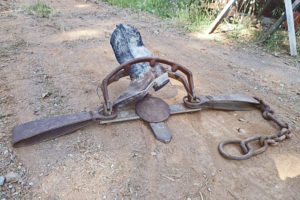
This trap snaps shut on a leg. If you use these lay them over with camouflage such as leaves or branches. Also mark where it is so you don’t get stuck in it. These will only be useful against raiders if you lay a lot of them like an improvised minefield.
Non-lethal House Defense Traps
Non-lethal traps such as nails in the carpet should not be used against the undead.
http://zombie.wikia.com/wiki/Traps

Leave a Reply